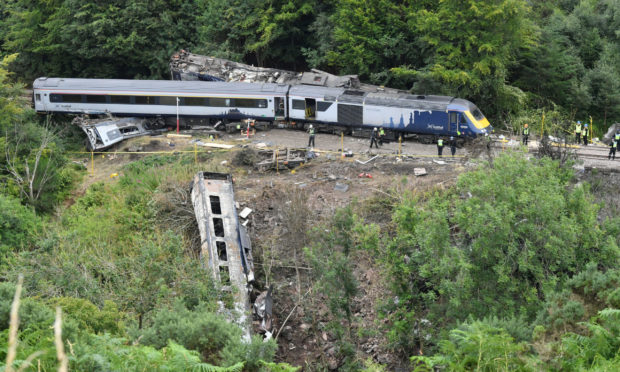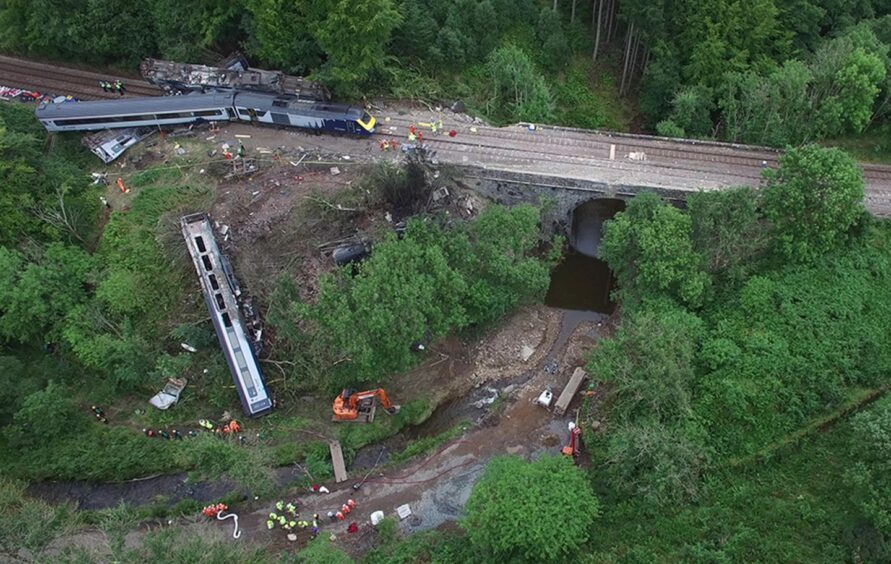Hero workmen prevented even greater disaster by pushing a fuel tank out of the crash zone as the 6:54 train from Stonehaven caught fire, a court has heard.
Reading out a timeline of the crash at the High Court in Aberdeen, advocate depute Alex Prentice KC revealed that a small team of contractors were on-site carrying out work at a bridge close when the train derailed on the morning of August 12, 2020.
As a train carriage burst into flames, the workmen quickly leapt into action and used a small digger to move a portable fuel tank away from the scene.
It was stated the team’s supervisor called 999 immediately after the workmen heard “a loud rumbling noise from above” and ran as derailed train carriages fell down the embankment.
The court heard that moments after they raised the alarm police informed railway officials that a was off the track and “on fire”.
Driver Brett McCullough, conductor Donald Dinnie and passenger Christopher Stuchbury died following the accident.
Team tried to put out fire
Today, operator Network Rail entered a plea of guilty to failing to conduct itself in a manner that would prevent people from a risk of serious injury and death.
Relaying the moments following the tragedy, Mr Prentice told the court how the team of contractors provided initial aid to crash survivors before pushing the fuel tank away from the site to prevent a greater disaster.
He added that the team then made a “timber mat” across the river to create a temporary bridge in order for emergency services to access the site.
They then used the digger to attempt to carry water to put out the train fire, which was “successful until the fire spread”, Mr Prentice said.
Those assembled in the High Court also heard how moments before the crash driver Brett McCullough asked if there was any reduced speed in place.
He was told by a signaler: “No, everything is fine between myself and Stonehaven. So that’s just normal speed for there.”
Mr McCullough then accelerated the train to 72..8mph, close to the regulation line speed of 75mph.
Only hours before the amount of rainfall the area had received had been described as “beyond biblical”.
The 6:54 train from Stonehaven had only just started off after being told to halt its journey and return to Stonehaven.
It soon after derailed between Carmont and Stonehaven killing three and injuring six people.
Judge Lord Hugh Matthews is expected to hand down sentencing on Network Rail tomorrow.

